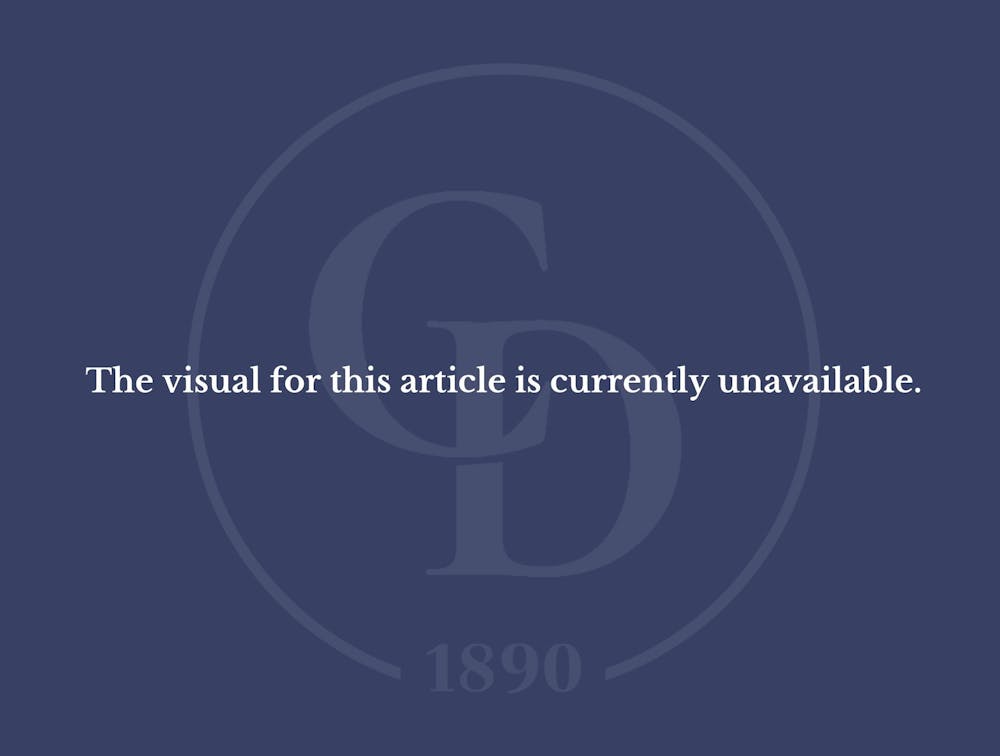“The past is never dead. It’s not even past.”
Directors Gerard Bush and Christopher Renz introduce their 2020 film “Antebellum” by flashing this William Faulkner quote — a subtle nod to its premise — what would happen if a successful Black woman today suddenly woke up to find herself trapped and enslaved during the Antebellum period? While this question had potential to ignite intelligent and profound explorations of trauma and slavery’s impact on future generations of Black people and how they manifest in systems of oppression today — ultimately, the film is a showcase of brutality that fails to meaningfully explain the connections between the past and present.
Horror and thriller films that hinge on Black voices and tackle paramount issues of race and discrimination are few and far between. The ones that do arise tend to carry the insurmountable pressure of having to be flawless. However, with director Jordan Peele’s exquisite and brilliant blending of social commentary, satire and scares from “Get Out” (2017) and “Us” (2019) fresh in mind, it is hard not to feel dissatisfied with “Antebellum’s” lack of depth.
The film begins with the camera floating through an idyllic, softly lit and orange-hued Louisiana plantation — reminiscent of the problematically romanticized version of the Antebellum South in “Gone with the Wind.” Set to a full, fluid and dramatic orchestral score, a young girl in an uncomfortably cheerful yellow dress frolics through the grass while a group of Confederate soldiers march towards a huddle of tents.
This serene image quickly shifts, subverting the rosy “Gone with the Wind'' imagery with the suffering of the film’s Black characters, including the protagonist, Eden, played by Janelle Monáe, through tortuorus psychological, physical and sexual abuse inflicted by their sadistic masters.
This turbulent montage of pain and anguish is exploitative. It does nothing more than offer a distressing exhibition of the torture of Black bodies — solely for shock-value — that depraves Black characters of interiority and humanity. Unfortunately, this phenomenon pervades in films centered around slavery and Black characters in general. Not much is revealed about Monáe’s character or any of the characters for that matter. They are simply reduced to canvases onto which the directors paint America’s “original sin.”
Suddenly, Janelle Monáe wakes up in the present-day as Veronica, a successful Black intellectual with a sleek apartment and picture-perfect family. We are taken through a day in Veronica’s life as she travels to Louisiana and speaks about her new book on inclusivity while also being bombarded with microaggressions and back-handed compliments from a certain snarky white woman who makes an appearance in both timelines.
Disappointingly, this new chapter does not redeem itself. There are very few remnants of the “past” timeline that are woven into the “present” timeline. The film puts little effort into fleshing out the ties between the past and present that the title and trailer seem to promise. It leaves viewers wondering what the connection between the two parts is — Is Veronica being haunted by her ancestors? Is there time-travel involved?
When the plot-twist is finally revealed — about thirty minutes before the film actually ends — it becomes apparent that the past is not really the past. The “return” to Antebellum times was not intended to be conveyed figuratively by the modern-day scenes, but rather is presented literally, through sadistic, modern-day white supremacists who kill and torture for fun.
One of the more commendable aspects of the film is the juxtaposition of speaking and silence. While Eden and the other slaves are threatened and killed for uttering a single word, Veronica makes a living out of her ability to express herself through spoken and written words. Yet, the dialogue still falls flat. When discussing racism, characters speak in truisms, and Veronica’s speeches are overwhelmingly peppered with buzzwords — making the dialogue feel repetitive and inauthentic.
There are a few glimmering moments in the final scenes that deliver a bit of much needed action and tension. A tense debacle between Veronica and the vicious white woman who targeted her throughout the film holds more vigor than the entire movie itself. However, even this scene fell flat. It seemed as if the film would address the toxicity of white women, but instead it was just another half-hearted attempt at making a powerful point.
“Antebellum” tries to pack too many issues, too many plot points and centuries of Black trauma into one hour and forty minutes — a challenging task to execute while still creating a piece that is entertaining as well as respectful. The film had potential to provide refreshing and perceptive social commentary, but it chooses to touch upon a number of topics superficially rather than focus on one in-depth. Ultimately, “Antebellum” overwhelms us with loose ends without tying any of them together.







